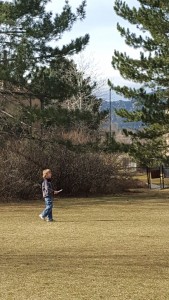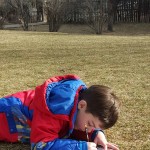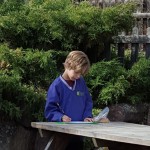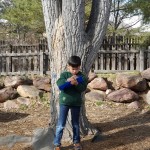 In writing class, I like to try and alternate the units between fiction and non-fiction. After working hard on a clear, concise, research report, it is often refreshing to return to our creative selves. In Reading Class, many of my students are reading Sadako, a story about a Japanese girl during World War II. Studying Japanese haiku is a great cross-curricular connection to further correlate Bixby’s Reading and Writing curriculum.
In writing class, I like to try and alternate the units between fiction and non-fiction. After working hard on a clear, concise, research report, it is often refreshing to return to our creative selves. In Reading Class, many of my students are reading Sadako, a story about a Japanese girl during World War II. Studying Japanese haiku is a great cross-curricular connection to further correlate Bixby’s Reading and Writing curriculum.
Studying haiku poetry has always been a favorite unit of mine. This minimalist Japanese form of poetry allows students to practice selective word choice, counting syllables, and critical thinking.  Sometimes haikus are sentences. Other times, they are selected words and phrases chosen to convey a mood. Though these poems are short, they can be quite fickle. At times, you’ll think of the perfect idea, but you are one syllable short, and just like that, you are back to the drawing board. This particular aspect of haiku writing can lead to active problem solving and critical thinking. I often describe writing haikus as solving a puzzle. You want to think of the right word, or series of words, and they have to be placed in just the right way.
Sometimes haikus are sentences. Other times, they are selected words and phrases chosen to convey a mood. Though these poems are short, they can be quite fickle. At times, you’ll think of the perfect idea, but you are one syllable short, and just like that, you are back to the drawing board. This particular aspect of haiku writing can lead to active problem solving and critical thinking. I often describe writing haikus as solving a puzzle. You want to think of the right word, or series of words, and they have to be placed in just the right way.
To begin this unit, we are studying the poems by Basho, a poet who went on various extended journeys across Japan, writing haikus about nature. He always wrote actively using his five senses. While writing haikus, students will be asked to use their senses similarly. In addition to the traditional five sentences, Basho wrote using the ‘sixth’ sense of movement.
Old and quite pond
Suddenly a frog plops in –
A deep water sound
-Basho-
 He spoke of walking, traveling, water falling, and animals jumping, to bring his haikus to life. With the recent onset of warmer temperatures and reemerging spring weather, we too are going to venture outside to write haikus about what we are feeling and experiencing. Just as Basho walked and explored to be inspired, we as a class will take walks around our wonderful campus to let our senses
He spoke of walking, traveling, water falling, and animals jumping, to bring his haikus to life. With the recent onset of warmer temperatures and reemerging spring weather, we too are going to venture outside to write haikus about what we are feeling and experiencing. Just as Basho walked and explored to be inspired, we as a class will take walks around our wonderful campus to let our senses  guide our writing. We will engage our senses purposefully, consider how movement affects them, and translate these ideas into haiku. Mirroring Basho’s experiences, I look forward to taking the students outside again to feel inspired through this creation of an experiential learning environment.
guide our writing. We will engage our senses purposefully, consider how movement affects them, and translate these ideas into haiku. Mirroring Basho’s experiences, I look forward to taking the students outside again to feel inspired through this creation of an experiential learning environment.
-Colleen



